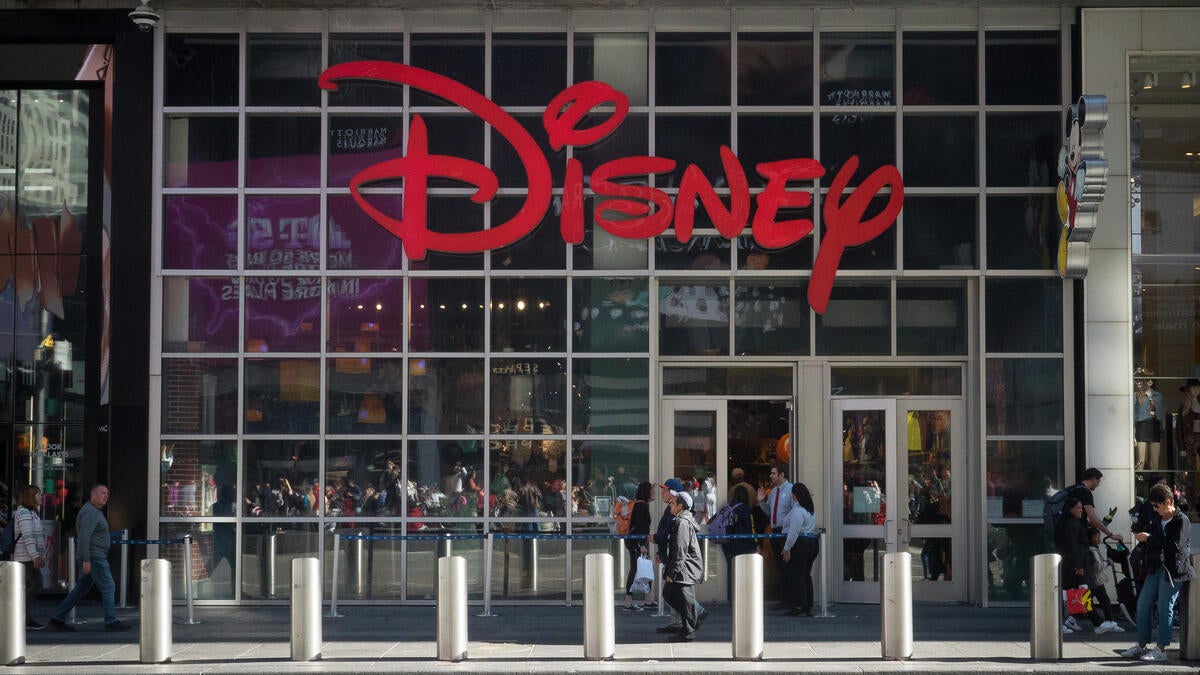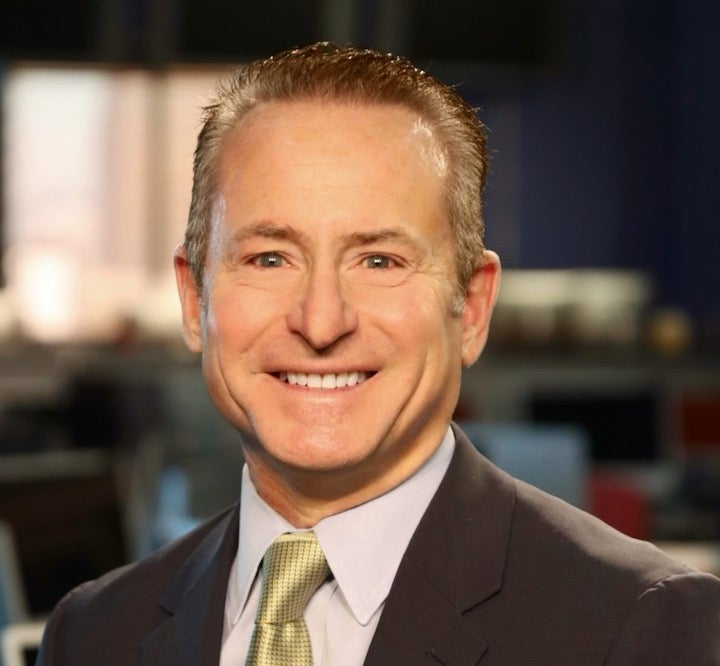The Walt Disney Company has endured the Great Depression, a world war, the rise and fall of VHS, the acquisition of Pixar, Marvel and Lucasfilm, and the switch to streaming — and still managed to stay on top for nearly a century.
This October, the mass media and entertainment conglomerate turns 100, a feat worthy of recognition when the average lifespan of a corporation these days is 10 years.
Disney is set to capitalize on its upcoming anniversary with global marketing efforts that include a special logo, new rides, exhibitions and tours, merchandise and limited-time collectibles.
For John Nicoletti, it's a time to reflect on his years at the company.
Nicoletti, executive director of the Cronkite Agency and professor of practice at the Walter Cronkite School of Journalism and Mass Communication at Arizona State University, worked at Disney for 11 years and witnessed firsthand what made the corporation such a strong brand, and how it has been able to shift with the times while retaining its core values.
ASU News spoke to Nicoletti just in time for the centennial celebration, which begins Oct. 16.
Editor's note: Answers have been lightly edited for length and clarity.
John Nicoletti
Question: Disney is about to celebrate its 100th anniversary. How extraordinary is that milestone for a business or corporation?
Answer: A 100-year anniversary is a cause for celebration for any company. But the remarkable thing about the Walt Disney Company has been its unique ability to constantly pivot, remain relevant and deliver on its brand promise of “creating happiness” throughout those 100 years. Walt and Roy Disney started the company as an animation and film studio, and through the years, we’ve watched as Disney has transformed itself to curate and develop other meaningful businesses, from theme parks and consumer products to streaming services. Like other global companies, Disney has experienced its challenges, but for generations, the Disney brand has remained at the forefront of different industries and positively entrenched in the minds of consumers all over the world.
Q: Historically speaking, what did Walt Disney do in terms of instilling his message to employees that has been maintained throughout the years?
A: From the moment someone is hired at Disney, they become immersed and grounded in the story of Walt Disney and the company’s legacy. On day one, each segment of the company has its own version of classes that are steeped in the traditions of the company and harken back to the messages that Walt himself instilled in the first employees. At theme parks and resorts, where I spent much of my time, you learn about the unique “role” you play as a “cast member” — Disney’s word for its employees — whether you work “onstage” or “backstage.” The park itself is where the “show” happens and everyone from the president to the hourly employee is empowered to create magical experiences for guests. At the end of that first day, you receive your Disney name tag with your name and the name of the resort.
It’s the little things that most people appreciate but may not notice that have become part of the Disney way: Cast members are encouraged to pick up trash whenever they see it; cast members will bend to a knee when addressing younger guests; and safety is the number one priority, whether it’s a small spill in a restaurant or the operation of one of Disney’s attractions. Every cast member has a role in bringing the magic of a Disney experience to life and creating happiness.
Q: How has Disney managed to change with the times without compromising their core values?
A: The leadership of the Walt Disney Company over the years has always had to maintain the delicate balance between tradition and innovation. When you are dealing with a century of families’ memories from television, movies, consumer products and theme parks, that is a difficult task. As ... an example, I remember a guest sharing his distress at the removal of a tree at Disneyland. His explanation: It’s where he proposed to his wife and they had visited the park every year on their anniversary to relive the memory.
Complexities abound when you are updating a classic Disneyland or Walt Disney World attraction or creating the live-action version of a Disney princess movie. Yes, Disney and its leaders have experienced missteps, but in large part, Disney has been able to successfully manage those complications.
During my tenure, Bob Iger, Disney’s former and current CEO, stressed four major themes for all segments of the company: creative storytelling, technological innovation, global expansion and diversity of thought. When I think back to everything that was achieved during his initial tenure (2005–20), it is mind-boggling — the Pixar, Marvel, Lucasfilm and Fox acquisitions; theme parks in Hong Kong and Shanghai; Walt Disney Animation’s re-emergence; and, of course, the move to streaming content on Disney+. For the most part, Disney has been able to maintain its high level of quality family entertainment through the years.
Mickey Mouse himself turns 95 years young this year. Maintaining relevancy requires telling stories with heart, which is the essence of what Disney offers.
Q: How has the Disney brand been perceived globally?
A: Along with maintaining relevancy, growing a brand requires a global presence. Disney now has parks on three continents, cruises and adventure travel to almost every other, and consumer products and media ventures around the globe.
I was fortunate to be part of the opening team when Disney opened its first park on mainland China — Shanghai Disney Resort. It was fascinating to watch the Chinese guests enter the gates on opening day, June 16, 2016, to see a Disney theme park for the first time. It was like I was standing in Anaheim, California, on July 17, 1955 — the day Disneyland opened. But what people may not appreciate is the amount of research and work that was done by the company for more than decade to deliver a theme park that was “authentically Disney, but distinctly Chinese.”
Each one of the parks around the globe has unique elements — attractions, shows, structures, food, etc. — that are meant for local guests, but done with Disney’s signature innovative storytelling and highest quality standards. The same care is taken when it works with actors around the globe to voice its characters in native languages, with major tentpole movies being dubbed in 25 or more languages. Maintaining a high-quality brand like Disney requires this level of detail.
Q: How has your Disney experience served or prepared you in your role at the Cronkite Agency?
A: I was in constant awe of the creativity of my Disney colleagues — watching a director show us a film in process, hearing a new track from a musical artist or working alongside the team at Walt Disney Imagineering (a hybrid word that combines imagination and engineering). Imagineers from all disciplines come together to make mountains float, bring an entire phalanx of stormtroopers to life or convince guests they have just dropped to the depths of the ocean alongside zombie pirates. At Disney, innovation and imagination are encouraged.
One way is through “blue sky” thinking. You are encouraged to think beyond what is possible, as long as it is in service of the story. It is why Disney’s award-winning attractions are considered some of the best in the industry. Initially, there should be no limit to the imagination that can be a part of the experience.
I encourage our students to push beyond everyday thinking and consider what is truly possible if there were no limits placed on your imagination. We often ask our students “where is the wow?” when they are pitching a new idea for a client of the Cronkite Agency.
I think the other lesson I try to impart is both the tremendous advantage and the tremendous burden of managing the brand identity of a global brand. Many of our students will have the chance to work for well-known and well-established brands in their career. It’s important they understand the balance between advancing the company and protecting the legacy of what has taken years to achieve.
Q: Despite its recent challenges, is there another 100 years on the horizon for Disney?
A: Walt’s famous quote about Disneyland was that it “will never be completed. It will continue to grow as long as there is imagination left in the world.” I want to believe that holds true for the Walt Disney Company as well. There are significant headwinds the company faces in the coming years, given the disruptive nature of the entertainment business and companies in various industries that are seeking to take their market share. It will require continued strong leadership at all levels and smart decisions that take into account Disney’s heritage and its future, to ensure that Disney remains profitable, relevant and beloved for another 100 years.
Top photo: The Disney Store in Times Square, Manhattan. Photo courtesy iStock/Getty Images
More Arts, humanities and education

ASU alum's humanities background led to fulfilling job with the governor's office
As a student, Arizona State University alumna Sambo Dul was a triple major in Spanish, political science and economics. After graduating, she leveraged the skills she cultivated in college —…

ASU English professor directs new Native play 'Antíkoni'
Over the last three years, Madeline Sayet toured the United States to tell her story in the autobiographical solo-performance play “Where We Belong.” Now, the clinical associate professor in…

ASU student finds connection to his family's history in dance archives
First-year graduate student Garrett Keeto was visiting the Cross-Cultural Dance Resources Collections at Arizona State University as part of a course project when he discovered something unexpected:…

